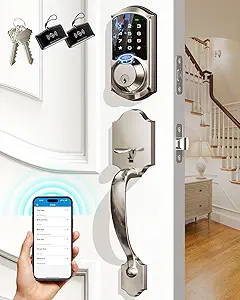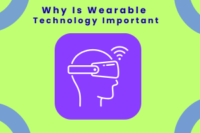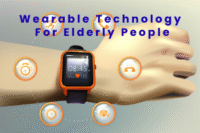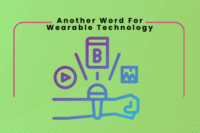Top 10 Most Popular Internet of Things Devices
Published: 02 Feb 2025
The Internet of Things (IoT) is making life easier with smart devices that connect and automate tasks. From smartwatches to security cameras, these gadgets improve convenience, safety, and efficiency. Knowing the top 10 most popular IoT devices helps you choose the best technology for your needs. It also keeps you updated on the latest innovations shaping the future. Let’s explore the must-have IoT devices and how they make a difference!
Most Popular IoT Devices
- Smart Watches
- Voice Controllers
- Smart Locks
- Air Quality Monitors
- Connected Cars
- Tracking Devices
- Smart Mats
- Health Monitoring Smart Devices
- Irrigation Systems
- Connected Factories & Smart Supply Chain Management
1. Smart Watches
Overview
Smartwatches are wearable devices that combine traditional timekeeping with advanced digital features. They connect to smartphones and other devices, offering functionalities like health monitoring, communication tools, and fitness tracking. Since their introduction, smartwatches have become integral to personal health management and daily convenience.
Key Features
- Health Monitoring: Track heart rate, sleep patterns, and detect irregular heart rhythms.
- Fitness Tracking: Monitor activities such as steps taken, calories burned, and exercise routines.
- Communication Tools: Receive notifications, send messages, and make calls directly from the wrist.
- Customization: Personalize watch faces, bands, and apps to suit individual preferences.
How It Works
Smartwatches use sensors to collect data on various activities and health metrics. They sync this information with smartphones or cloud services via Bluetooth or Wi-Fi. Advanced models incorporate GPS for location tracking and NFC for contactless payments.
Benefits
- Health Insights: Continuous monitoring provides real-time data, aiding in proactive health management.
- Convenience: Quick access to notifications and apps reduces the need to frequently check smartphones.
- Safety: Features like fall detection and emergency SOS enhance personal security.
Use Cases
- Fitness Enthusiasts: Utilize workout tracking and performance metrics to optimize training.
- Busy Professionals: Manage schedules, receive important alerts, and communicate efficiently on the go.
- Health-Conscious Individuals: Monitor vital signs and maintain wellness goals with ease.
Challenges & Limitations
- Battery Life: Frequent charging may be necessary, especially with intensive use.
- Data Privacy: Concerns about the security of personal health information.
- Cost: High-end models can be expensive, potentially limiting accessibility.
Future Trends
The smartwatch market is projected to grow significantly, with revenues expected to reach $62.46 billion by 2028.

The above report’s source is demandsage.com
Emerging trends include the integration of advanced health monitoring features, such as blood pressure and glucose level tracking, and enhanced connectivity through 5G technology.
In summary, smartwatches have evolved into multifunctional devices that enhance daily life through health monitoring, communication, and convenience. As technology advances, they are poised to offer even more sophisticated features, further integrating into various aspects of personal and professional life.
2. Voice Controllers
Overview
Voice controllers are smart assistants that allow users to control devices used for internet of things through voice commands. They integrate with smart home systems, providing hands-free convenience for tasks like adjusting lighting, setting alarms, and managing appliances.
Key Features
- Voice Recognition – Understands and processes natural language commands.
- Smart Home Integration – Connects with lights, thermostats, and security systems.
- AI Assistance – Offers real-time answers, reminders, and automation.
- Multi-Device Control – Syncs with multiple internet of things devices for seamless operation.
How It Works
Voice controllers use AI-powered speech recognition to process commands. They connect via Wi-Fi or Bluetooth to control devices used for internet of things, responding to user inputs instantly.
Benefits
- Hands-Free Operation – Manage devices without touching them.
- Increased Accessibility – Helps users with disabilities control home functions.
- Time-Saving – Automates tasks like scheduling and information retrieval.
Challenges & Limitations
- Privacy Concerns – Constant listening raises data security issues.
- Accent and Language Barriers – Some users may experience recognition errors.
- Network Dependency – Requires a stable internet connection.
Future Trends
By 2028, the voice assistant market is expected to surpass $30 billion, driven by advancements in AI and machine learning. Future voice controllers will offer improved personalization, better multilingual support, and deeper integration with internet of things devices.
Voice controllers continue to revolutionize smart homes by making devices used for internet of things more intuitive and accessible. Their role in automation is expanding, shaping the future of connected living.
3. Smart Locks
Overview
Smart locks are keyless security solutions that allow users to lock and unlock doors remotely using smartphones, voice commands, or keypads. They are among the most popular devices used for internet of things, offering convenience, security, and automation for homes and businesses.

Key Features
- Remote Access – Lock or unlock doors from anywhere using an app.
- Biometric Authentication – Uses fingerprints or facial recognition for added security.
- Voice Control Integration – Works with voice assistants for hands-free access.
- Access Logs – Tracks entry and exit times for better security monitoring.
How It Works
Smart locks connect via Wi-Fi or Bluetooth, allowing users to control access remotely. Some models use encrypted key codes, while others support biometric authentication, making devices used for the internet of things more secure and efficient.
Benefits
- Enhanced Security – Eliminates risks of lost or duplicated keys.
- Convenience – Grant or revoke access instantly.
- Real-Time Monitoring – Receive alerts and track entry logs.
Challenges & Limitations
- Battery Life – Requires regular charging or battery replacement.
- Hacking Risks – Vulnerable to cyber threats if not secured properly.
- Connectivity Issues – Needs stable internet or Bluetooth connection.
Future Trends
By 2030, over 3 billion smart locks are expected to be in use globally, aligning with the rapid increase in how many internet of things devices are there today. The market is evolving with AI-powered security features, blockchain authentication, and improved energy efficiency, ensuring smart locks remain a vital part of devices used for the internet of things.
4. Air Quality Monitors
Overview
Air quality monitors are smart sensors that track indoor and outdoor air pollution levels in real time. These devices help individuals and businesses maintain healthier environments by detecting harmful pollutants like carbon dioxide (CO₂), volatile organic compounds (VOCs), and particulate matter (PM2.5). They are considered among the best internet of things devices for health-conscious users.
Key Features
- Real-Time Monitoring – Measures air quality instantly.
- Smart Alerts – Sends notifications when pollution levels rise.
- Integration with Smart Homes – Works with HVAC systems and purifiers.
- Historical Data Tracking – Provides long-term air quality insights.
How It Works
Air quality monitors use sensors to detect pollutants and send data to a connected app. Many models integrate with AI-based analysis to predict trends and suggest actions, making them one of the top IoT devices for environmental safety.
Benefits
- Health Protection – Reduces risks of allergies, asthma, and respiratory issues.
- Improved Indoor Air Quality – Helps optimize ventilation and purification.
- Smart Home Integration – Automatically adjusts air filters and alerts users.
Challenges & Limitations
- High Cost – Advanced models can be expensive.
- Calibration Needs – Sensors require regular maintenance for accuracy.
- Connectivity Issues – Requires stable Wi-Fi for real-time updates.
Future Trends
By 2025, the air quality monitoring market is expected to grow significantly, driven by increasing awareness of pollution and its health effects. With AI-driven analytics and more accurate sensors, air quality monitors will continue to rank among the best internet of things devices, helping users create safer living environments.
5. Connected Cars
Overview
Connected cars use IoT technology to enhance vehicle safety, navigation, and automation. These IoT-based products communicate with other vehicles, infrastructure, and cloud systems to improve driving efficiency and safety. With real-time data collection, connected cars optimize routes, monitor vehicle health, and enable remote control features.
Key Features
- Vehicle-to-Vehicle (V2V) Communication – Shares real-time road data.
- Autonomous Driving Support – Enhances self-driving capabilities.
- Smart Diagnostics – Alerts users about maintenance needs.
- Infotainment Systems – Connects to smartphones for seamless media access.
How It Works
Connected cars use sensors, GPS, and cloud computing to process real-time data. These IoT device examples integrate with smart traffic systems and AI-powered navigation, helping reduce congestion and enhance safety.
Benefits
- Enhanced Safety – Collision detection and automated emergency braking.
- Fuel Efficiency – Smart driving recommendations save energy.
- Seamless Connectivity – Syncs with smart home devices and apps.
Challenges & Limitations
- Cybersecurity Risks – Susceptible to hacking threats.
- High Cost – Advanced models require significant investment.
- Connectivity Dependency – Requires stable internet for optimal performance.
Future Trends
By 2025, connected cars will see wider adoption as 5G technology improves their real-time responsiveness. With AI-driven automation and advanced security features, they will remain among the most innovative IoT-based products, reshaping the future of transportation.
6. Tracking Devices
Overview
Tracking devices are essential IoT-based products that monitor the location of objects, people, and vehicles in real time. These devices use GPS, RFID, and cellular networks to provide accurate tracking and security. Businesses, logistics companies, and personal users rely on them to safeguard assets and optimize operations.
Key Features
- Real-Time Location Tracking – Provides live updates on movement.
- Geo-Fencing Alerts – Notifies users when an object leaves a defined area.
- Long Battery Life – Designed for extended use without frequent charging.
- Cloud Connectivity – Stores and processes data for easy access.
How It Works
These IoT device examples use a combination of satellite signals, Bluetooth, and mobile networks to transmit location data. The information is accessible through mobile apps or cloud platforms, allowing remote tracking of assets.
Benefits
- Improved Security – Prevents theft and unauthorized movement.
- Better Fleet Management – Optimizes delivery and transportation routes.
- Personal Safety – Helps track elderly individuals, children, or pets.
Challenges & Limitations
- Privacy Concerns – Raises issues regarding data security.
- Signal Limitations – May not work in areas with weak connectivity.
- Battery Constraints – Some models require frequent recharging.
Future Trends
By 2025, tracking devices will see improved accuracy with AI and 5G integration. Businesses and individuals will continue adopting these IoT-based products to enhance security, optimize logistics, and improve everyday convenience.
7. Smart Mats
Overview
Smart mats are interesting IoT devices designed for fitness, health tracking, and posture correction. They integrate sensors and AI technology to monitor body movements, pressure distribution, and even vital signs. As one of the most popular internet thing innovations, they are used in yoga, physical therapy, and sleep tracking.
Key Features
- Pressure-Sensing Technology – Detects weight distribution and posture.
- AI-Powered Feedback – Provides real-time posture corrections.
- Health Monitoring – Tracks heart rate, breathing patterns, and stress levels.
- Wireless Connectivity – Syncs data with mobile apps via Bluetooth or Wi-Fi.
How It Works
Smart mats have embedded sensors that analyze pressure points and body movement. The data is processed through AI algorithms and sent to an app, providing insights on posture, balance, and wellness. These interesting IoT devices help users improve form and prevent injuries.
Benefits
- Improves Posture – Offers real-time correction for better body alignment.
- Enhances Fitness Performance – Tracks balance and movement precision.
- Monitors Health – Helps detect stress, fatigue, and sleep patterns.
Challenges & Limitations
- High Cost – Advanced models can be expensive.
- Battery Life – Regular charging may be needed for continuous tracking.
- Data Accuracy – Some mats may provide inconsistent readings.
Future Trends
By 2025, smart mats will feature better AI integration, more precise sensors, and extended battery life. As one of the most popular internet thing devices, they will continue shaping fitness, rehabilitation, and overall wellness.
8. Health Monitoring Smart Devices
Overview
Health monitoring smart devices are transforming how individuals track their well-being. These devices use advanced sensors and AI to measure vital signs, detect abnormalities, and provide real-time health insights. They include smartwatches, fitness trackers, ECG monitors, and blood pressure monitors, enabling users to take control of their health.
Key Features
- Continuous Health Tracking – Monitors heart rate, blood pressure, oxygen levels, and more.
- AI-Powered Analysis – Detects patterns and alerts users to potential health issues.
- Wireless Connectivity – Syncs with smartphones and cloud platforms for easy access.
- Wearable & Non-Wearable Options – Ranges from wristbands to smart rings and patches.
How It Works
These devices use optical sensors, bioimpedance technology, and AI algorithms to collect health data. The information is processed in real-time and displayed on connected apps. Some devices also use cloud-based analytics to provide deeper health insights and early warning alerts.
Benefits
- Early Disease Detection – Helps identify heart issues, irregular rhythms, and oxygen deficiencies.
- Fitness & Lifestyle Tracking – Encourages physical activity and healthy habits.
- Remote Health Monitoring – Assists patients with chronic conditions by providing real-time data to doctors.
Challenges & Limitations
- Data Accuracy – Not always as precise as clinical-grade equipment.
- Privacy Concerns – Sensitive health data may be vulnerable to cyber threats.
- Battery Life – Frequent charging needed for continuous tracking.
Future Trends
By 2025, AI-driven diagnostics, non-invasive glucose monitoring, and improved biometric tracking will make health monitoring smart devices more accurate and accessible. With continuous innovation, these devices will play a crucial role in preventive healthcare and remote patient monitoring.
9. Irrigation Systems
Overview
Smart irrigation systems use IoT technology to optimize water usage in farming and landscaping. They adjust watering schedules based on real-time data from soil moisture sensors and weather forecasts.
Key Features
- Soil Moisture Sensors – Detects water levels in the soil.
- Weather-Based Adjustments – Prevents overwatering by using climate data.
- Remote Access – Users control systems via smartphones.
- Automated Scheduling – Ensures efficient watering times.
Benefits
- Water Conservation – Reduces waste and supports sustainability.
- Improved Crop Yields – Provides plants with the right amount of water.
- Cost Savings – Lowers water and electricity bills.
Market Trends
Smart irrigation is among the top 10 internet of things devices, with a growing market expected to reach $5.8 billion by 2033. Leading brands include Toro, Rain Bird, and Netafim.
Challenges
- High Initial Cost – Expensive setup for small farmers.
- Internet Dependence – Requires stable connectivity.
Future Outlook
Advancements in AI, solar power, and machine learning will make these internet of things device examples even more efficient. Smart irrigation will play a key role in sustainable farming worldwide.
10. Connected Factories & Smart Supply Chain Management
Overview
Connected factories and smart supply chain management use IoT technology to automate processes, enhance efficiency, and reduce operational costs. These systems integrate sensors, AI, and cloud computing to monitor production lines, track shipments, and optimize logistics.
Key Features
- Real-Time Monitoring – Sensors track machine performance and inventory.
- Predictive Maintenance – AI detects potential failures before they occur.
- Automated Logistics – Smart tracking ensures on-time deliveries.
- Blockchain Integration – Secures supply chain data from fraud.
Benefits
- Higher Efficiency – Reduces downtime and boosts productivity.
- Cost Reduction – Lowers waste and unnecessary expenses.
- Improved Quality Control – Identifies defects early in production.
Market Trends
The global smart supply chain market is expected to reach $85 billion by 2030. Leading companies, including Siemens, IBM, and Cisco, are driving innovation.
Challenges
- Cybersecurity Risks – Factories are vulnerable to hacking.
- High Setup Costs – Advanced IoT systems require significant investment.
Future Outlook
With AI, 5G, and blockchain advancements, connected factories will become even smarter. Companies adopting these systems will gain a competitive edge in global supply chain management.
Smart locks make your home safer and easier to use. You don’t need keys—just use your phone or voice to lock and unlock the door. You can check if the door is locked, even when you’re not home. If someone tries to open it, you get an alert. This makes smart locks better than regular locks. They help keep your home safe and make life simple!
| Conclusion |
|---|
|
The top 10 list features a wide range of smart devices that improve daily life. From smartwatches that track health to smart locks that enhance home security, these devices bring convenience and safety. Voice controllers make smart homes easier to use, while air quality monitors help ensure a healthy environment. Connected cars and tracking devices improve navigation and security. Smart mats and health monitoring devices support fitness and well-being. Irrigation systems optimize water use, and smart factories improve business operations. Each item is unique but shares one goal—making life smarter and more efficient! |
| Personal Recommendation! |
|---|
|
Technology is making life easier, and these smart devices offer great benefits. Whether you want better security, health tracking, or home automation, there’s something for everyone. Take a look at the list and pick the one that fits your needs best. Personally, I recommend smart locks—they bring both safety and convenience to any home! |
An example of an IoT device is a smart thermostat. It connects to the internet, allowing users to control the temperature of their home remotely using a smartphone app. Other examples include smartwatches, smart locks, and voice assistants like Alexa.
Characteristics of the Internet of Things (IoT)
- Connectivity – IoT devices connect to the internet and share data.
- Automation – Devices work with little or no human help.
- Real-time Monitoring – IoT tracks and updates data instantly.
- Data Collection – Devices collect and analyze useful information.
- Remote Control – Users can manage devices from anywhere.
The term Internet of Things (IoT) refers to a network of devices connected to the internet that can communicate and share data. These devices include smart home gadgets, wearable tech, and industrial sensors. IoT helps automate tasks, improve efficiency, and make everyday life more convenient.

- Be Respectful
- Stay Relevant
- Stay Positive
- True Feedback
- Encourage Discussion
- Avoid Spamming
- No Fake News
- Don't Copy-Paste
- No Personal Attacks

- Be Respectful
- Stay Relevant
- Stay Positive
- True Feedback
- Encourage Discussion
- Avoid Spamming
- No Fake News
- Don't Copy-Paste
- No Personal Attacks



